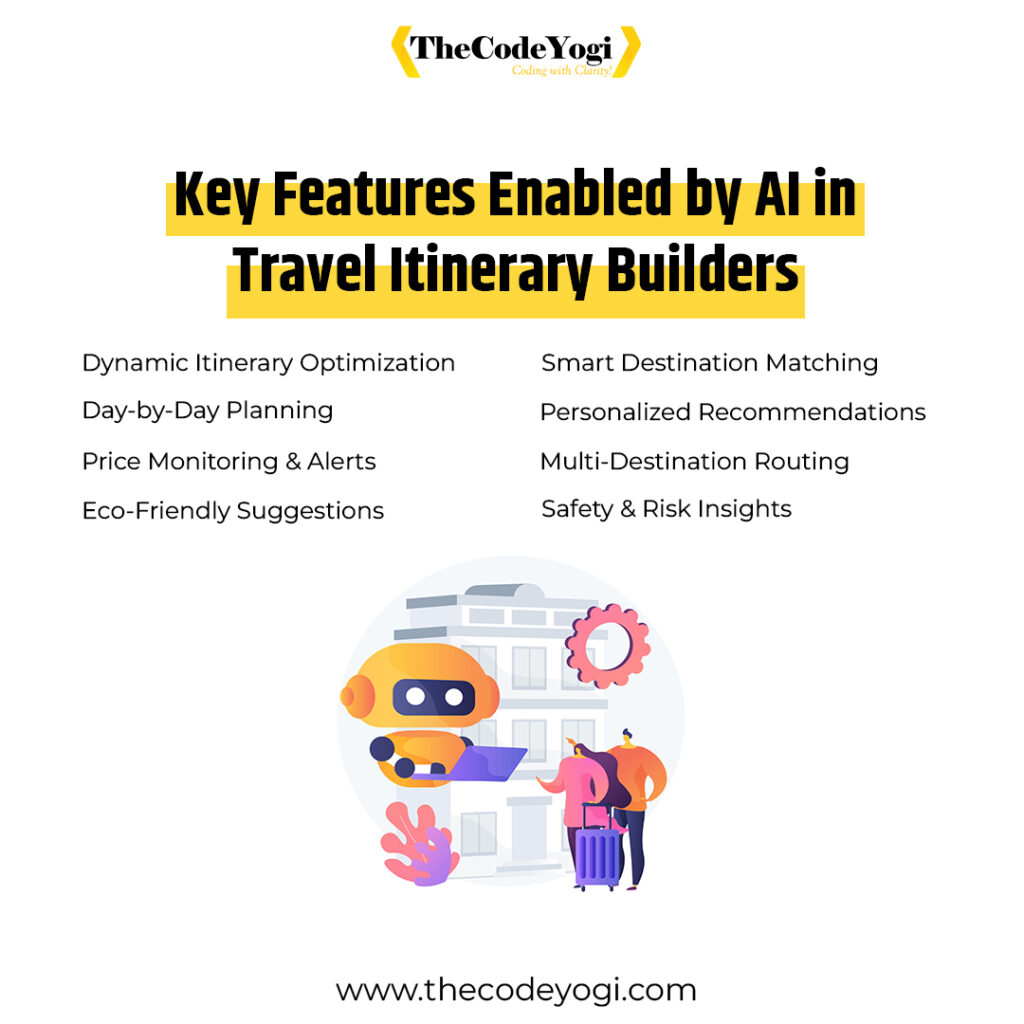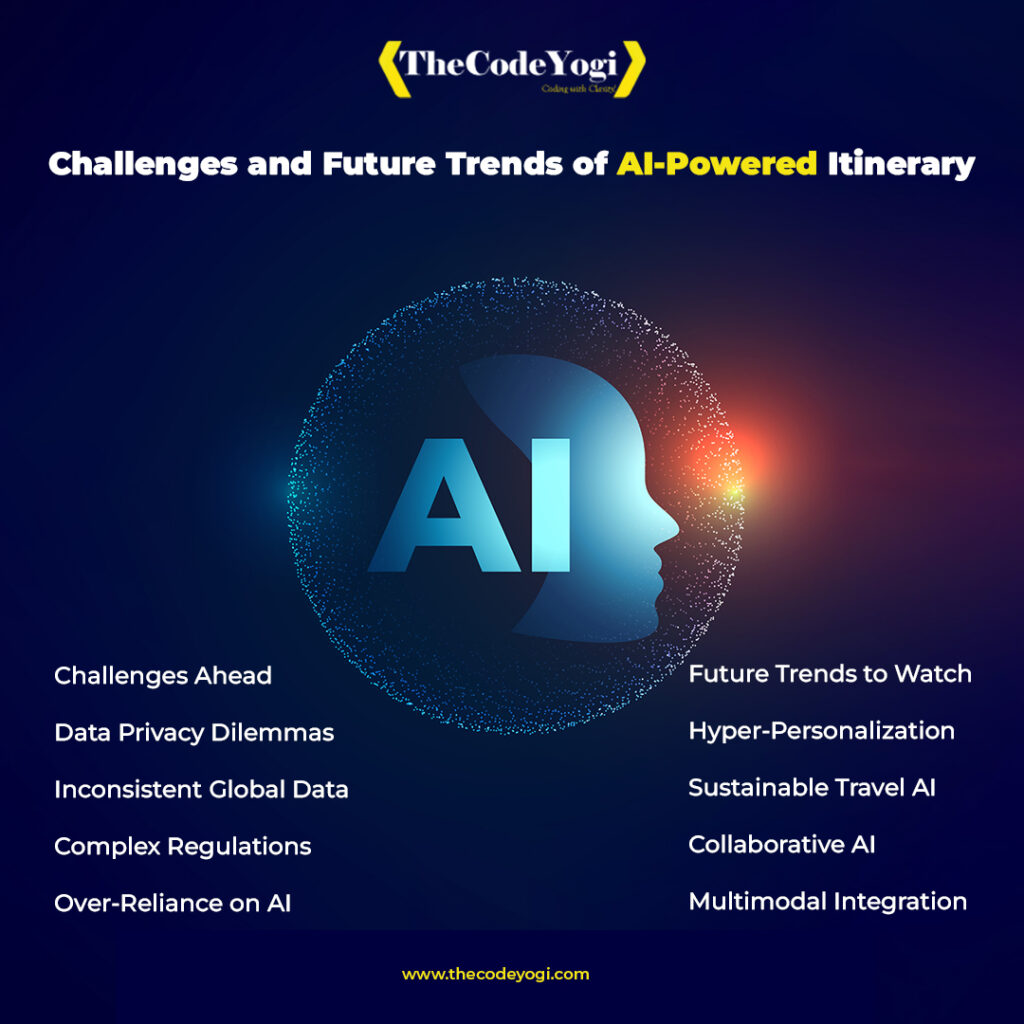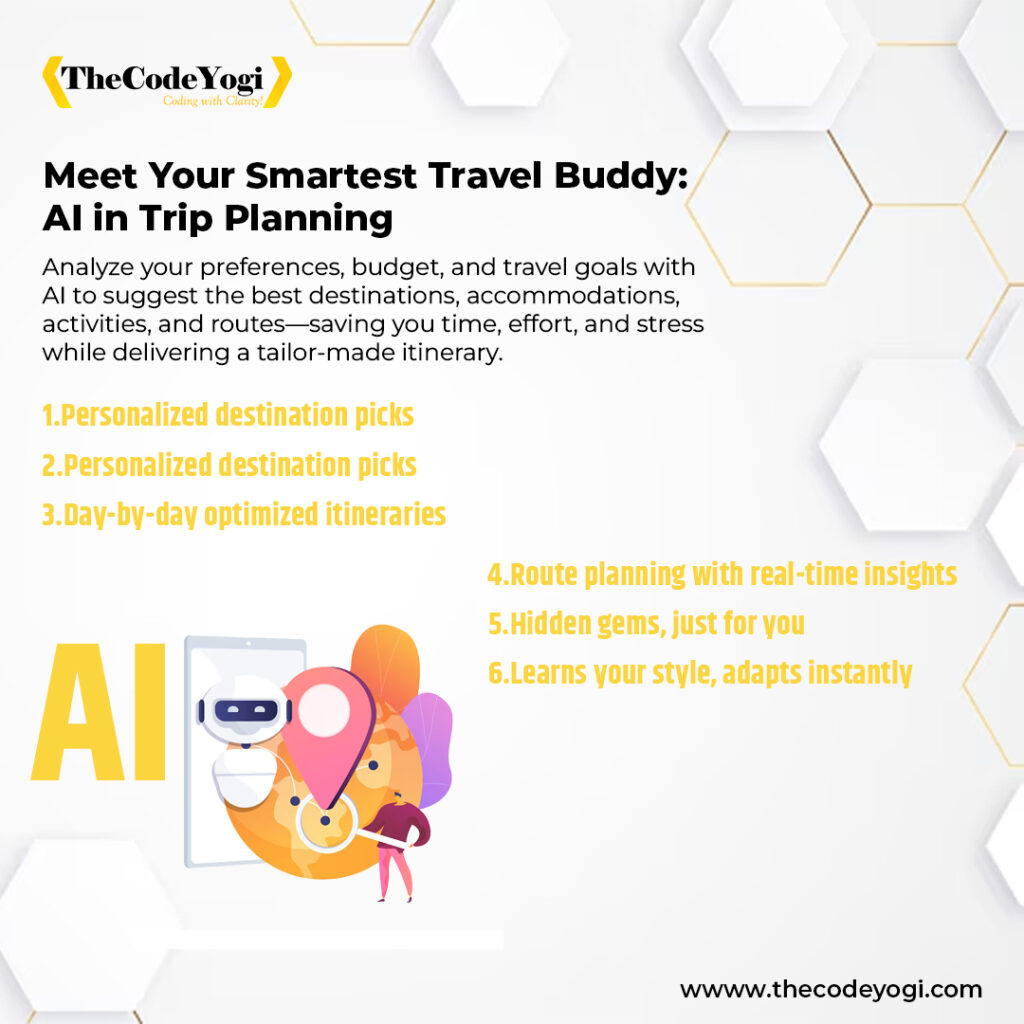In the digital age, planning an outing has advanced past flipping through guidebooks or browsing travel boards and travel websites. Thanks to Artificial Intelligence (AI), smart travel itinerary builders are transforming how we explore the travel arena, making the planning process quicker, smarter, and more customized than ever before, along with fitting in the budget. Isn’t it simply wonderful?
But have you wondered what truly is going on backstage of these AI-powered platforms? Let’s dive deep into how AI powers journey itinerary builders and what makes them the backbone of modern-day trip planning. But before that, let’s shed some light on what exactly an AI-powered Travel Itinerary Builder is.
Setting the Stage: What Are AI Travel Itinerary Builders?
An AI Travel Itinerary Builder is a tool or application that helps passengers/customers make customized plans for their visits, including housing, transport, visitor sites, food, and/or experience. Traditionally, it requires essential manual input and extensive research. Today, AI improves all steps – from recommending destinations to booking the final phase of your trip.
However, the extent to which the trip can be planned varies from functionalities of one Itinerary Builder to another.
Meet Your Smartest Travel Buddy: AI in Trip Planning
AI might be fast, but it’s no magic. AI in Travel Itinerary Builder works step-by-step to offer its users a fully customized solution. Let’s walk through how AI powers an itinerary builder from start to finish.
1: User Input & Intent Recognition
- First and foremost, the process starts with a traveler inputting basic details: destination, dates, preferences, group size, budget, etc. These basic details can vary depending on the builder you are using.
- Then these inputs(specifically free-text inputs) are processed using Natural Language Processing(NLP).
2: Real-Time Data Aggregation
- Before recommending to the user, AI counter checks the availability by integrating APIs from airlines, hotels, local transport, attractions, and events.
- This data is pulled in real-time to ensure availability and pricing accuracy.
3: Dynamic Recommendations
- Based on user input and behavior, the AI selects matching hotels, experiences, local attractions, and travel routes.
- Based on ML ranking systems, AI ensures that the best matches show up first.
4: Route Optimization
- Then AI uses geospatial algorithms to optimize the route to reduce travel time, avoid traffic zones, and align with attraction opening hours.
- For example, it may schedule museums in the morning and nightlife spots in the evening.
5: Feedback Loop & Adjustments
- This step enables users to adjust their itinerary.
- For example, if someone removes a museum and adds a beach, the AI learns from this and reshuffles the plan accordingly.
Core AI Technologies That Power Travel Itinerary Builders
- Natural Language Processing (NLP)
NLP allows the system to understand user input, whether typed as “romantic places in Paris” or “3-day itinerary for Goa.” It decodes the user’s intent and fetches relevant options. - Machine Learning (ML)
ML algorithms learn from user interactions. For instance, if many users skip a certain museum in Rome, the AI may eventually stop recommending it or replace it with more popular alternatives. - Recommendation Engines
These engines are similar to what Netflix or Amazon uses. In a travel context, they suggest destinations, accommodations, restaurants, and activities based on user preferences and trending data. - Computer Vision (CV)
Used mainly for visual search features, computer vision can allow users to upload images and receive travel recommendations related to them. For example, uploading a photo of Santorini might prompt suggestions for Greek island tours. - Geospatial AI
Geospatial data is used to analyze and optimize routes, distances, and travel times between destinations, especially useful in multi-city or cross-country trips.
Key Features Enabled by AI in Travel Itinerary Builders

- Smart Time Allocation: AI knows how long activities usually take. It prevents overstuffing and creates realistic daily plans.
- Local Insights: By scanning millions of local reviews, blogs, and posts, AI surfaces hidden gems — like that hole-in-the-wall café or secluded hiking trail.
- Real-Time Alerts: AI can send push notifications for flight delays, weather changes, or local disruptions and replan the itinerary instantly.
- Multi-Platform Sync: Itinerary builders often use AI to sync plans across devices, calendars, and map apps. Some even offer voice assistance during travel.
- Sustainability Filters: Modern AI tools can also rate and suggest eco-friendly accommodations and low-emission travel modes.
Advantages Of AI Travel Itinerary Builders Over Manual Planning:
| Feature | Manual Planning | AI-Powered Builder |
| Speed | Hours/Days | Minutes |
| Accuracy | Often outdated info | Real-time data |
| Personalization | Hard to achieve | Highly tailored |
| Route Planning | Requires maps | Auto-optimized |
| Cost Management | Manual calculations | Budget-aware |
Use Case: AI-Powered Itinerary for a 5-Day Trip to Japan
Let’s say a user wants a 5-day Japan trip under ₹1,00,000. Here’s how AI makes it seamless:
- Day 1: Arrival in Tokyo, AI suggests a budget hotel close to metro stations or bus stations, depending on the preference of the user.
- Day 2: Based on interest in culture, AI will recommend tourist attractions like Meiji Shrine, Harajuku walk, and Shibuya.
- Day 3: A day trip to Mt. Fuji with a guided tour, chosen by popularity and ratings.
- Day 4: Suggests a ramen tasting tour in Osaka based on the user’s food interests.
- Day 5: Shopping in Akihabara before flight — AI adjusts timing to ensure airport check-in buffer.
Challenges and Future Trends of AI-Powered Itinerary

While AI has revolutionized trip planning, there are still areas to improve:
Challenges:
- Data Silos: Not all travel providers offer open APIs or real-time data.
- User Trust: Some users still prefer human agents for emotional assurance.
- Language & Cultural Nuances: AI can struggle with highly localized preferences or cultural norms.
Future Trends:
- AI + AR Integration: Augmented Reality-based city guides powered by AI.
- Voice-First Itinerary Assistants: Fully conversational planning via Alexa or Google Assistant.
- Emotion-Sensing AI: Travel suggestions based on mood or psychological needs.
Conclusion
AI-powered travel itinerary builders are more than just planning tools; they are intelligent travel companions that learn, adapt, and anticipate your needs. They don’t just tell you where to go; they ensure every detail aligns with who you are as a traveler. As AI continues to evolve, expect even more intuitive, immersive, and intelligent travel planning experiences that take the guesswork and stress out of every journey.



